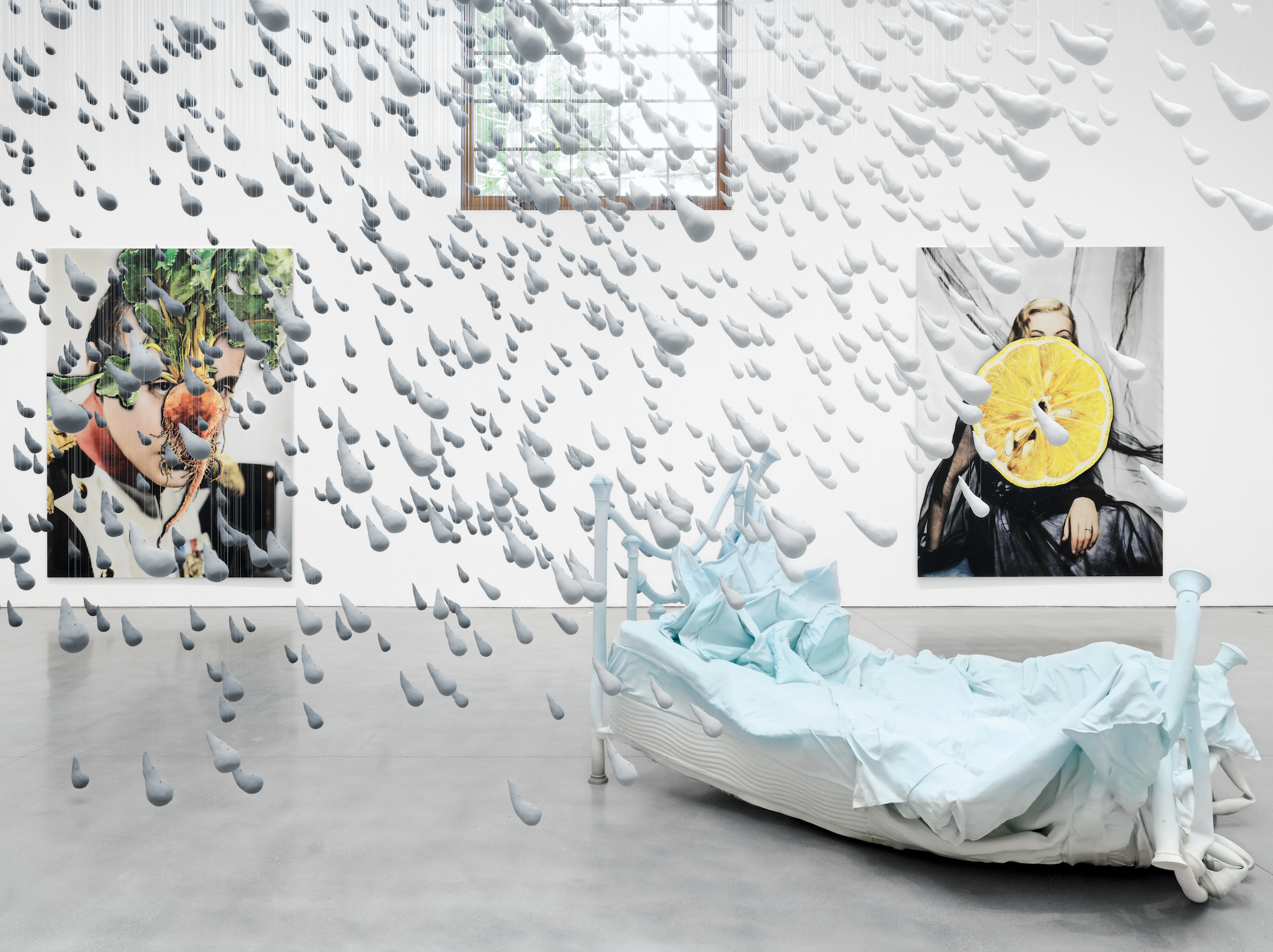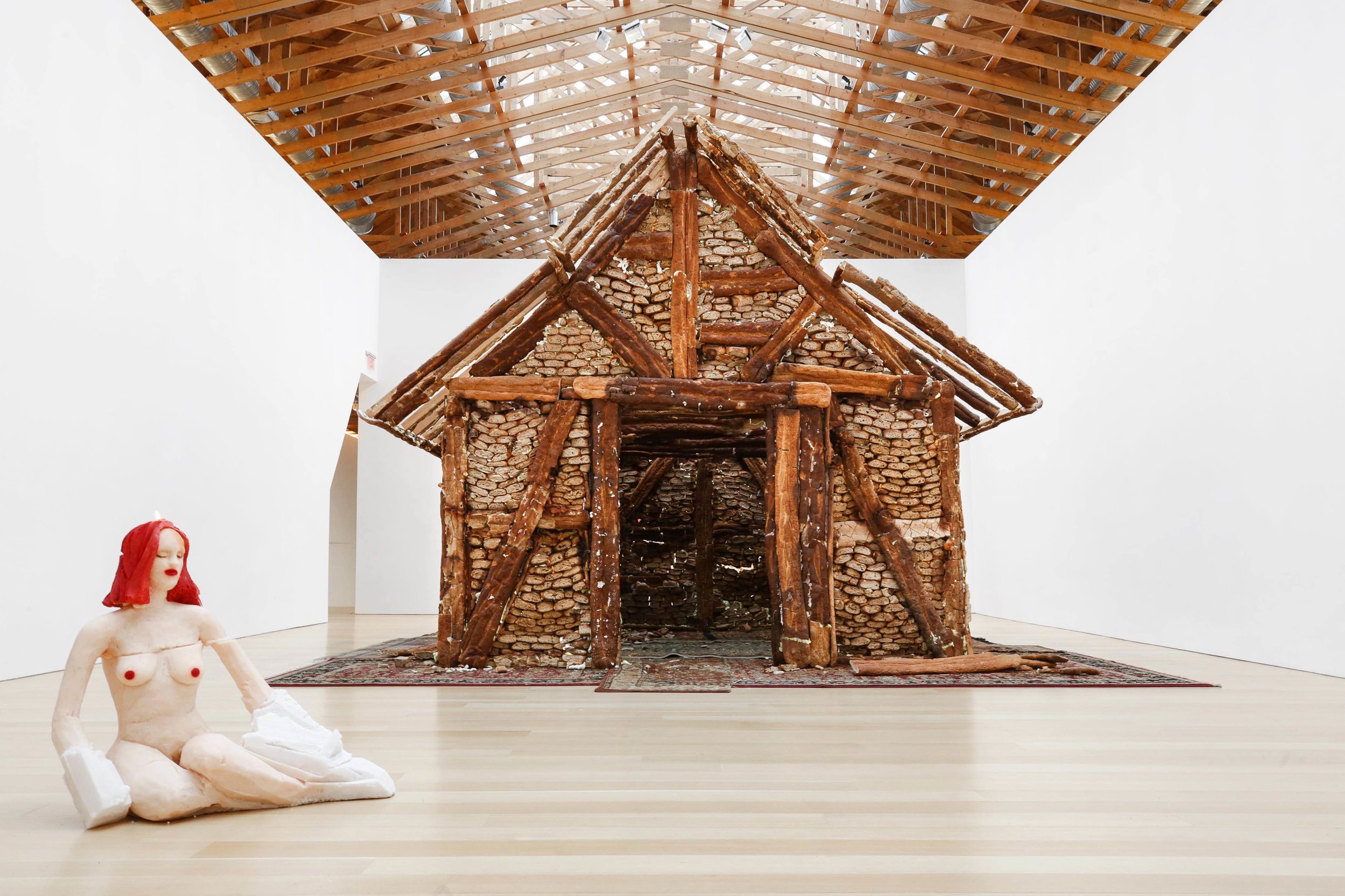I like the idea of error. I think it’s just a beautiful word. Anything we do successfully in life is a potential error.” – Urs Fischer
The Brant Foundation Art Study Center is pleased to present URS FISCHER: ERROR, a solo exhibition of works by Fischer from the last two decades. Featuring some of the artist’s most notable large-scale sculptures and paintings from the Brant Collections, ERROR celebrates The Brant Foundation’s 10th anniversary at its Greenwich space with Urs Fischer, the first artist to present a solo exhibition at The Brant Foundation Art Study Center in 2010.
In Fischer’s works, the meaning lies within the very substances and processes of its making, whereby ideas become material and materials take on a life of their own. Sculptures are created through an elaborate aluminum casting process, roughly hewn in wood, or cast in wax only to melt away during the run of the exhibition. The artist delights in the possibilities of surface, but even works that suggest his handmade touch turn out to have been produced through a range of digital processes in order to create the oddly surreal appearance of reality gone wrong.
Bread House (2004) is a life-size cabin built from loaves of bread, expandable foam, and wood. The quaint alpine structure is set on an arrangement of Oriental carpets. Over time the house decays, shedding crumbs on the floor and emitting a distinct, pervasive odor.
The bed sculptures Kratz and Untitled (Soft Bed), (both 2013) signal an alternate surrealist world and appear to buckle under the pressure of some invisible force. Kratz, cast in aluminum but disguised in a layer of mimetic paint, is made even more credible by the pile of real concrete that has been poured on top of it, as if to hasten its collapse.
In Horse/Bed (2013), a horse has fully merged with a hospital bed, whose various parts envelop the animal’s head and legs. The horse stands upright, “wearing” the bed like a harness as though nothing is amiss. Digitally combined from 3-D scans of a taxidermy workhorse and a hospital bed, then milled from aluminum, the detail of the sculpture’s impressive materiality provides an overwhelming amount of information to the naked eye.
The monumental Problem Paintings, making use of headshots as backgrounds, colored and enlarged, then obstructed by silkscreened still life images of fruits and vegetables, propose a clash of representational systems that is both convulsive and darkly humorous.
In the series of Phantom Paintings: Aluminum (2015), Silicone (2015), Barium (2016), Chlorine (2015), Lead & Tin (2016), and Drained (2016), the background of each painting is a photographic image of Fischer’s own face or collaged elements thereof, overlaid with silkscreened marks that are based on real painted or drawn gestural compositions. Like the Problem Paintings, these layered images provide a fresh and subversive view through the clash of representational systems and different cosmic orders.
In the library there are four new paintings created digitally on an iPad, representing imaginary environments, artworks in domestic settings, and surreal compositions. On a screen, as opposed to paper or canvas, Fischer is able to paint with light itself—moving illuminated pixels, reflecting on the subtle atmospheric changes across day, night, and seasons.


